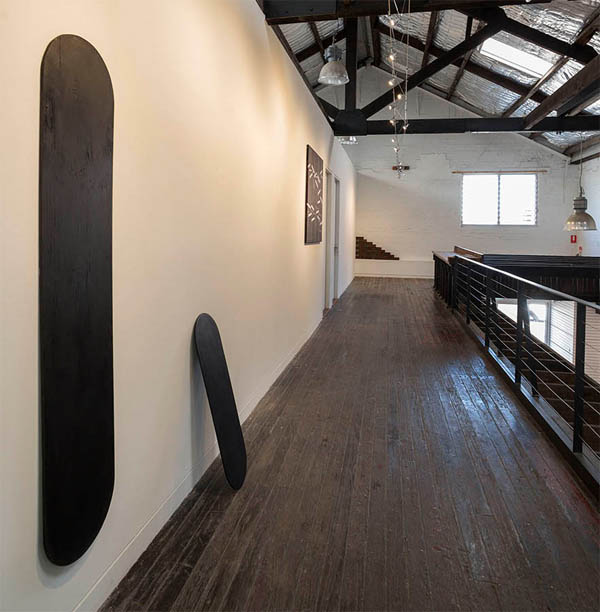 |
|
||||||||||||
Margaret Roberts blp 2018, wood, paint, wax, location. In From the other side of the wall, showing work by Sue Callanan, Tim Bass and Margaret Roberts, ArticulateUpstairs, 2018. Photo: Peter Murphy.
|
|||||||||||||
I installed two blps in this exhibition to show regard for artists who make physical space a key subject of their work. Why did that suddenly become so popular among artists last century? Was it in the hope that people would mimic the work by themselves noticing the world around them as well? Did they think the abuse of the environment might stop if enough people started also valuing the physical places in which they lived? Did they dare to hope that enough people might start caring for the physical places in which we live to stop fossil fuel burning, coal mining and csg fracking, to close nuclear power stations before they leaked into the oceans, to stop using plastic, to prevent global warming, to plant trees everywhere, and so on? Imagine the future we would be facing now if that had actually happened? Those twentieth century artists are not to blame for that failure any more than are the many others who contribute to the world-wide environmental movement that keeps fighting in the hope that the worst can be avoided. Richard Artschwager was one of those many twentieth century artists. He made blps (among other things) from the mid 1960s onwards. Curator Jennifer Gross described a blp as something that ‘had no merits unto itself, but you would notice the context, the world around it, . . . it is a signal for you to see other things’ (1). While the name blp seems unique to Artschwager, the shape itself is everywhere—look for it on footpaths, in your kitchen and pill packets, in building decorations left from ancient Rome, the Baroque and probably from other periods. (1) youtube.com/watch?v=ELIo2zY2AQw
|
|
||||||||||||
|
|||||||||||||